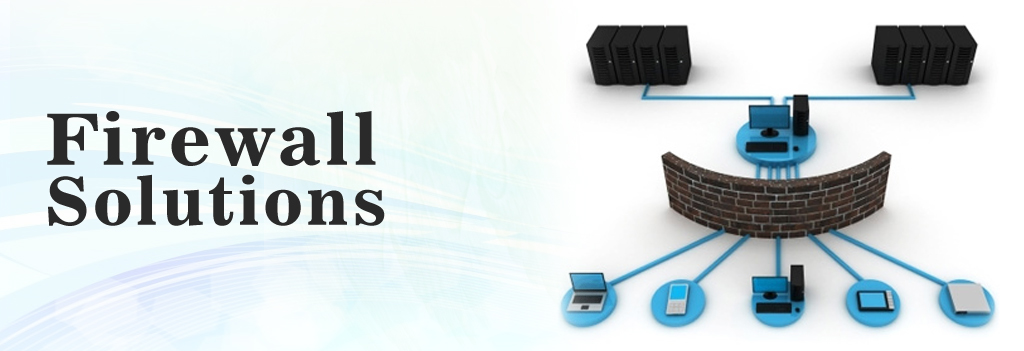|
 |
| Student
Shelter In Computers
Slogan
: Our Aim & Mission as a Organization to Promote Information
Technology , Cyber Secuirty , Entrepreneurship Education into Young Generation
, Teach , Train & Employee them in Eduction Sector , Banks & Different
Industries and Bulid them Future Leaders. |

Web Application Firewall
Web Application Firewall analyzes all user access to your
business-critical web applications and protects your applications and their data
from attacks. Web Application Firewall dynamically learns your
applications’ “normal” behavior and correlates this with the industry’s leading
threat intelligence for web applications to deliver superior protection.
Web Application Firewall identifies and acts upon dangers
maliciously woven into innocent-looking website traffic; traffic that slips
right through traditional defenses. This includes application vulnerability
attacks such as SQL injection, cross-site scripting and remote file inclusion;
business logic attacks such as site scraping and comment spam; and fraudulent
activity like account takeover attacks.
Web Application Firewall analyzes all user access to your business-critical web
applications and protects your applications and data from cyber attacks.
Web Application Firewall dynamically learns your applications’
“normal” behavior and correlates this with the threat intelligence crowd-sourced
from around the world and updated in real time to deliver superior protection.
The industry
leading Web
Application Firewall identifies and acts upon dangers maliciously woven into
innocent-looking website traffic; traffic that slips right through traditional
defenses. This includes blocking technical attacks such as SQL injection,
cross-site scripting and remote file inclusion that exploit vulnerabilities in
web applications; business logic attacks such as site scraping and comment spam;
botnets and DDoS attacks; and preventing account takeover attempts in real-time,
before fraudulent transactions can be performed.
Hackers know what they want and where to find it. Critical data centers such as
file servers are targets for your “crown jewels,” like intellectual property,
financial information, deal data, or PII. Cyber-attacks have become increasingly
sophisticated, leveraging multiple tactics and tools, all with one goal: getting
in. File Firewall protects sensitive unstructured data
where it resides, so that you can prevent breaches, along with their resulting
exposure, costs and brand damage.
Student Shelter is an enterprise-class Web application security solution that
provides Apache and IIS Server Security across Dedicated, VPS and Cloud
environments.
It prevents Cross Site Scripting (XSS) Attacks, SQL Injection Attacks, Credit
Card Disclosure, Denial of Service (DoS) Attacks and more. It meets PCI
Compliance and also provides E-Commerce Security, IIS and Apache Security, Cloud
Security and more.
Most notable is that of the Payment Card Industry (PCI) Security Standards
Council who has required that in order to be in compliance, a company who
processes credit cards over the Internet needs to either complete, Option 1, a
web application vulnerability assessment or, Option 2, implement a web
application firewall.
PCI defines a web application
firewall as:
“A security policy enforcement point positioned between a web application
and the client end point. This functionality can be implemented in software or
hardware, running in an appliance device, or in a typical server running a
common operating system. It may be a stand-alone device or integrated into
other network components.”
Basically, a web application firewall, or WAF, protects web applications much in
the same way a traditional firewall protects a network. It controls the input
and output, as well as the access to and from the asset it is protecting.
However, traditional network firewalls, and even Intrusion Prevention Systems (IPS),
evaluate IP packets or protocols without an awareness of the application payload
so they cannot provide protection to the application layer. Without an awareness
of the HTML data payload these layer 3 devices cannot recognize and overcome the
types of application layer threats that make web applications vulnerable to
attack.
Unlike traditional firewalls that usually block access to certain ports or
filter by IP address, web application firewalls look at every request and
response within the different web service layers such as HTTP, HTTPS, SOAP, and
XML-RPC. The meticulous inspection of web traffic that web application firewalls
perform has also earned them the nickname “Deep Packet Inspection Firewalls”.
Risks Associated with Web Applications
Falling out of PCI
compliance may not be a concern
for many web site owners. Many web sites simply don’t collect credit card data
over the Internet and others rely on payment gateways like PayPal to handle all
of their online transactions.
Unfortunately for any business or person who runs a web site, deploying any type
of web application - even commercial applications or ones supported by a hosting
provider - puts the web site at risk for the following:
Web defacement and vandalism: using
Path Traversal exploits, attackers can gain access to parts of your web site
that the visitor never sees - the files and folders that exist outside of the
web document root directory.
Denial of Service attacks: by manipulating incoming web traffic, attackers
can overload your web server or web applications causing them to crash or slow
to a crawl. Visitors who have come to your site to purchase products, read
your content, or participate in the community will become discouraged when the
site is unavailable causing damage to your brand reputation and a potential
loss in sales.
Stolen user information: using SQL
Injection exploits attackers
can access any data stored in the data bases that your web site relies on.
Information like user accounts, user identities, and user credit cards can be
stolen or manipulated. Cross-site scripting can also be used to trick users
into giving up this information as well. By uploading malicious scripts to a
vulnerable web site, attackers can create a mock login area where visitors
unknowingly send their information to the attacker.Stolen user sessions: using Cross-Site
Scripting, attackers can steal a legitimate user’s session ID and manipulate
it to gain access to their information.
Being flagged as malicious by search
engines: various vulnerabilities found in many web sites allow attackers to
upload spam links to a site. Sites vulnerable to Cross-Site Scripting can also
be exploited so that attackers can upload malicious scripts like Trojan
horses, keystroke loggers, adware, spyware, and other malware. Once the search
engines become aware of sites serving spam or malware, they are flagged as
malicious and their page ranking drops.
The truth is, any web application is at risk. Whether it be a commercial
application or a Free/Open Source application the potential for it to have
vulnerabilities exists. Once these threats are known, attackers use well
coordinated methods to seek out sites that are vulnerable and begin to launch
their attack.
Preventing Web Application Attacks
Code reviews and vulnerability assessments are excellent ways to help seek out
and patch known vulnerabilities in a web application. However, as solid as these
two solutions are, they do raise two concerns.
Cost
Both code reviews and vulnerability assessments can be rather costly. One way a
company can defray some of these costs is to perform these duties in house but
this too may be expensive as personnel usually have to be trained in this
practice. Additionally, having people dedicated to these tasks pulls them away
from other duties. In smaller organizations, this may not be possible.
Zero-Day Exploits
Code reviews and vulnerability assessments work, but only against known
vulnerabilities. Zero-day exploits are ones that have no patch because they have
not yet been seen. Even the best reviewers and auditors cannot see into the
future to recommend fixes for problems that don’t exist yet.
Web Application Firewalls
Web application firewalls are a
perfect solution to the problems with code reviews and vulnerability assessments
because they actively and constantly protect web applications against threats
using Pattern Recognition to detect and thwart zero-day exploits and other
evolving threats, Session Protection to help prevent impersonation, and a
Signature Knowledgebase to block known vulnerabilities and known attackers.
With Student Shelter web application firewall you can avoid many different threats
to web applications because Student Shelter inspects your HTTP traffic and checks
their packets against rules such as to allow or deny protocols, ports, or IP
addresses to stop web applications from being exploited.
Architected as plug & play software, Student Shelter provides optimal out-of-the-box
protection against DoS threats, Cross-Site Scripting, SQL Injection attacks,
path traversal and many other web attack techniques.
The reasons Student Shelter offers such a comprehensive solution to your web
application security needs are:
Easy installation on Apache and IIS
serversStrong security against known and
emerging hacking attacks
Best-of-breed predefined security rules
for instant protectionInterface and API for managing multiple
servers with ease
Requires no additional hardware, and
easily scales with your business
The Need to Avoid Attacks
Gartner research states that 75% of all attacks happen at the application layer.
As more applications are designed to run in the browser, like Google Apps and
the upcoming release of Microsoft Office, and more apps are designed to run in
the cloud the odds that a company’s data is vulnerable to a number of threats
multiplies with each passing day.
Leaving data exposed like this is expensive. The 2003 attack against TJ Maxx
cost between $500 million to $1 billion in lost income and fines. Add to this
the fact that their stock fell roughly 66% and it is easy to see just how lost
income is not the only way a compromised site can hurt a business’ bottom line.
Small web sites are not immune to this threat. While they may not stand to have
millions of dollars stolen, they are prime targets for cyber criminals who use
these sites as a launching pad for malware distribution and other scams. The
sites that serve as unknowing hosts to these criminals soon find their
reputation ruined as they are flagged as malicious, and once their visitors are
infected they rarely return.
Web application firewalls directly address these threats by examining incoming
requests when they are opened by the web server. From here, the web application
firewall is able to see the request exactly as the web server sees it allowing
it to stop any malicious attempt in an efficient and timely manner.
When looking for a web application firewall solution, it is important to keep
certain criteria in mind:
Does the WAF provide protection to
applications running on both public facing web sites and internal web sites?Does it support multiple web server
software and operating systems?
Does it provide out-of-the box
protection?Does it update automatically?
Does it integrate with other security
systems?Is it easy to maintain?
Is it easy to manage?
Protect Your Web Applications With Student Shelter
Student Shelter 's unique security approach eliminates the need to learn the specific
threats that exist on each web application. The software that runs Student
Shelter
focuses on analyzing the request and the impact it has on the application.
Effective web application security is based on three powerful web application
security engines: Pattern Recognition, Session Protection and Signature
Knowledgebase.
The Pattern Recognition web application security engine employed by Student
Shelter
effectively protects against malicious behavior such as the attacks mentioned
above, and many others. The patterns are regular expression-based and designed
to efficiently and accurately identify a wide array of application-level attack
methods. As a result, Student Shelter is characterized by an extremely low false
positive rate.
What sets Student Shelter apart is that it offers comprehensive protection against
threats to web applications while being one of the easiest solutions to use.
In just 10 clicks, a web administrator with no security training can have
Student Shelter up and running. Its predefined rule set offers out-of-the box
protection that can be easily managed through a browser-based interface with
virtually no impact on your server or web site’s performance.

Designed &
Developed by Webmaster Abbas Shahid Baqir
Webmaster Feedback: stscomps@yahoo.com
All Rights
Reserved Copyright, 2010-2020 Student Shelter In Computers
®


